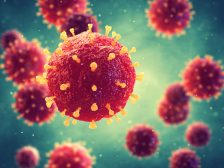Definition
noun
A form of symmetry in which the body plan is divisible into identical parts around a central axis
Supplement
In biology, symmetry is a characteristic of certain organisms in which there is regularity in parts on a plane or around an axis. An organism that is symmetrical (showing symmetry) would have a balanced distribution of duplicate parts on each side of the axis. It may not necessarily be an exact duplicate but an approximate repetition. An example of symmetry in organisms is bilateral symmetry.
Radial symmetry is a symmetry in which the sides exhibit correspondence or regularity of parts around a central axis. It is lacking left and right sides. It is in contrast to bilateral symmetry that is more common than radial symmetry. Most animals exhibit bilateral symmetry where there is a left and a right side along the midline. Relatively fewer animals exhibit radial symmetry. Some of them are sea stars, sea anemones, jellyfish, and sea urchins. In plant kingdom, though, there are many flowers exhibiting radial symmetry.
Special forms of radial symmetry are tetramerism (having four identical parts around a central axis) and pentamerism (with five identical parts around a central axis). Biradial symmetry is a combination of radial and bilateral symmetries, such as that of ctenophores (comb jellies).
Synonym(s):
- radiosymmetry
Compare:
See also:






